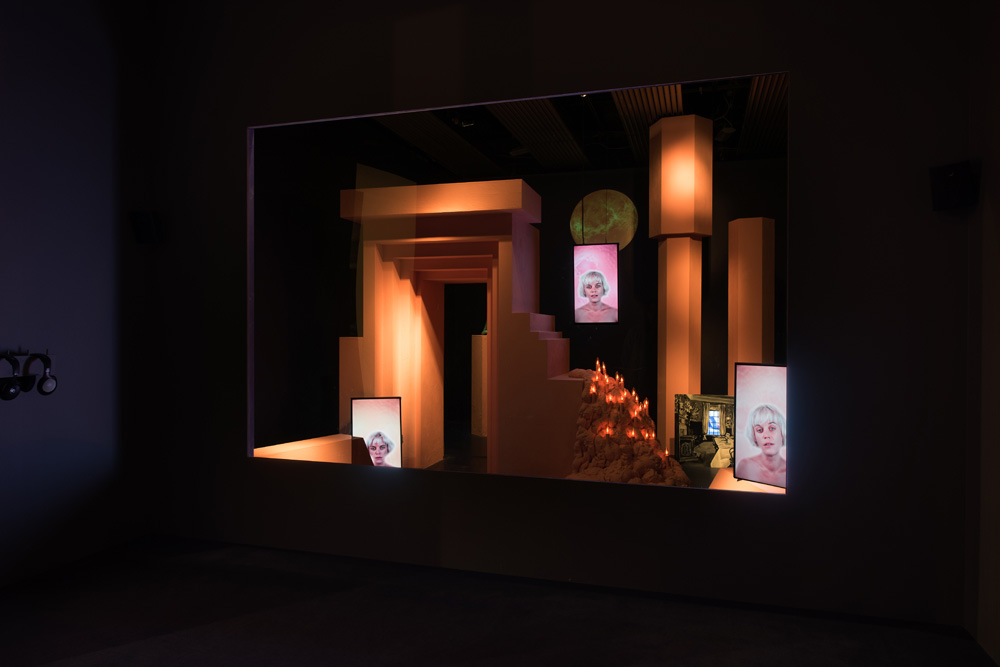
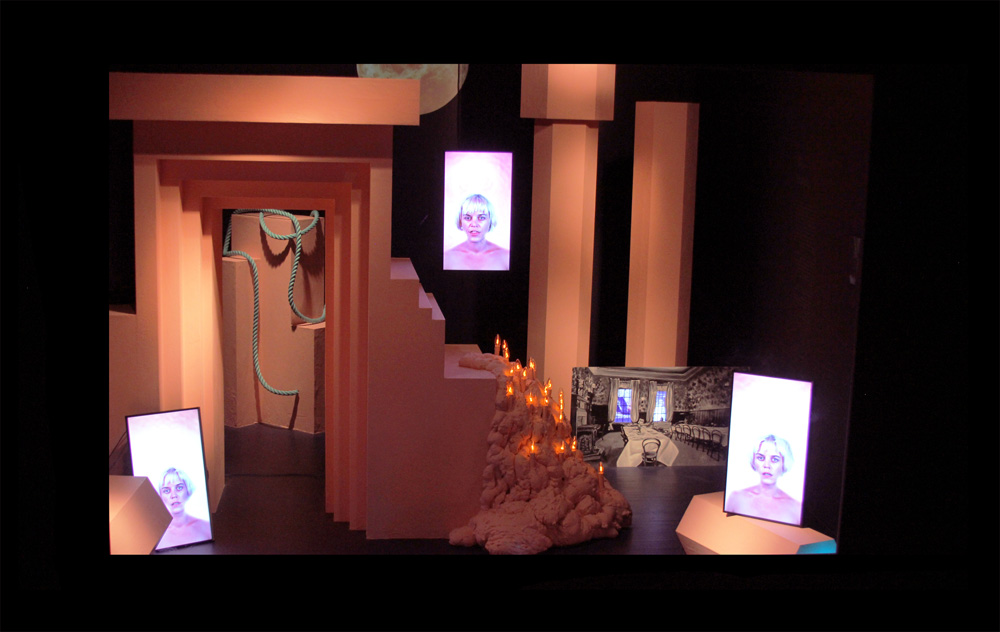
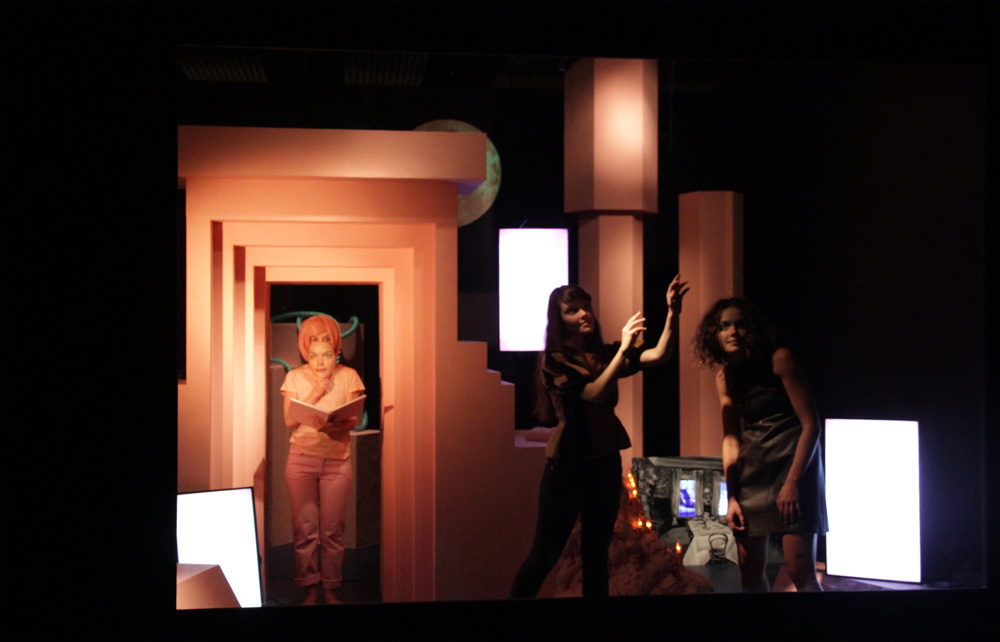
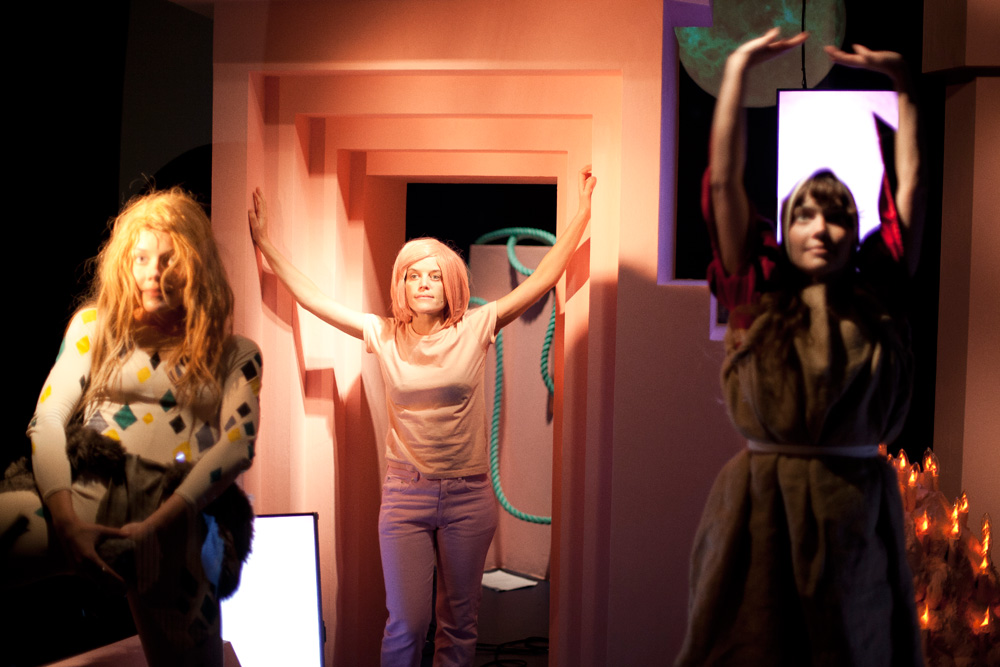
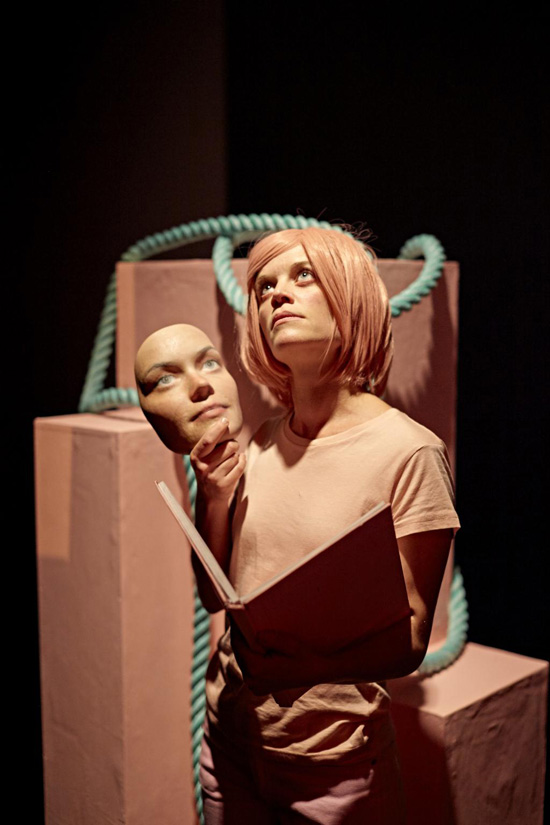
DC
“A city of women”, as proposed by Christine de Pizan in her 1405 proto-feminist book, The Book of the City of Ladies, a construct often revisited by feminist science fiction authors such as Pamela Sargent in The Shore of Women, Sally Miller Gearheart in The Wanderground and Suzy McKee Charnas in The Mother Lines, has served as a significant narrative device to articulate feminism’s ultimate goals; egalitarian civilizations and realities beyond gender. Dark Continent too takes this structure of an allegorical city of women to explore ‘feminine’ subjectivity and experience, the feminine not as female but as “a kind of radical otherness to any conception of the real”, as well as the potentials of a realism defined by excess and the irrational, qualities traditionally surrounding notions of “femininity”. A non-place, a home to out-of-placeness, a deliverance from otherness.
‘Dark Continent’ is the gates to this city out of time, an installation which combines text, film, sculpture, a series of three staged performances and a window through which to see. A gesamtkunstwerk braiding narratives, fictions and mythologies, a Dionysian descent into rapture, ideology, language and flesh into the bottomless pit told through a neanderthal hermaphrodite, a medieval mystic and the woman on the edge of time.
A city gated by sirens, the siren’s song, a song that leads us to a place of origin and disappearance, an approach to what is not yet there, a city which is simultaneously internal and geographic, past and future, part ruin, part construction, existing between destruction and becoming.
Part 1: The Wall, Part 2: The City and Part 3: The Crypt
“We know less about the sexual life of little girls than of boys. But we need not feel ashamed of this distinction; after all, the sexual life of adult women is a ‘dark continent’ for psychology” The Question of Lay Analysis (1926), Freud.

